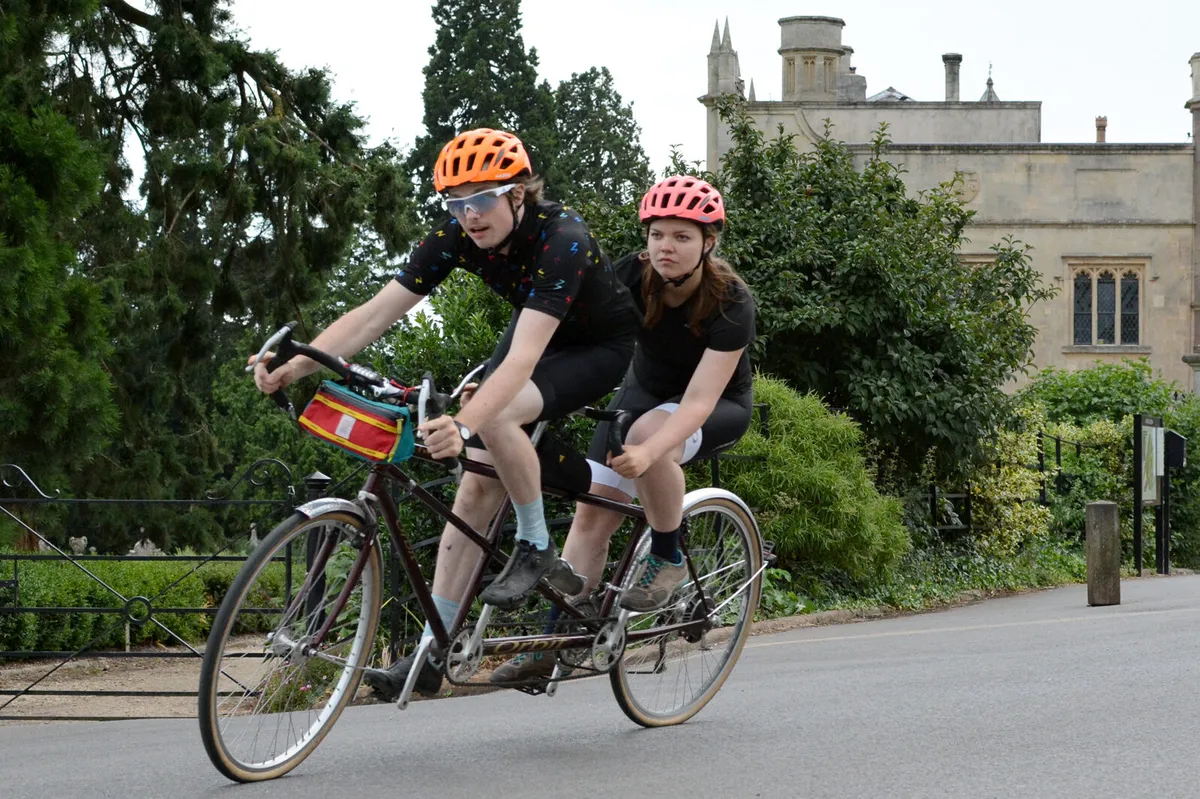My job at BikeRadar affords me the opportunity to test and review a tonne of really cool bikes, but we obviously try to focus our efforts on the things that people are likely to want to buy.
So it’s unsurprising that despite my dreams of trying out tandem riding, we decided few of you would be interested in me reviewing this rather niche pursuit. So instead of calling one in for test, I began my search for my new two-wheeled, two seater ride.
I’ve thought about buying a tandem for years for a number of reasons; primarily curiosity, but also the desire to balance out the disparity in fitness between myself and my girlfriend, Laura. While she’s a real keen-bean and does plenty riding herself, her interests are less one-dimensional than mine, so she actually spends time doing things other than cycling. As such, I figured being physically attached would help keep our pace balanced and fun for us both on longer rides.
Baby steps

Our first foray into tandeming actually started out on a really, really rubbish Apollo DoubleFun — yes, really — tandem that we borrowed off of a friend a few months back.
Despite the alarming, noodle-like flex of the frame, tear-inducingly uncomfortable saddles, howling cantilever brakes and comically wide bullhorn bars, we quickly fell in love with the novelty of riding conjoined, and began the search for our own tandem.
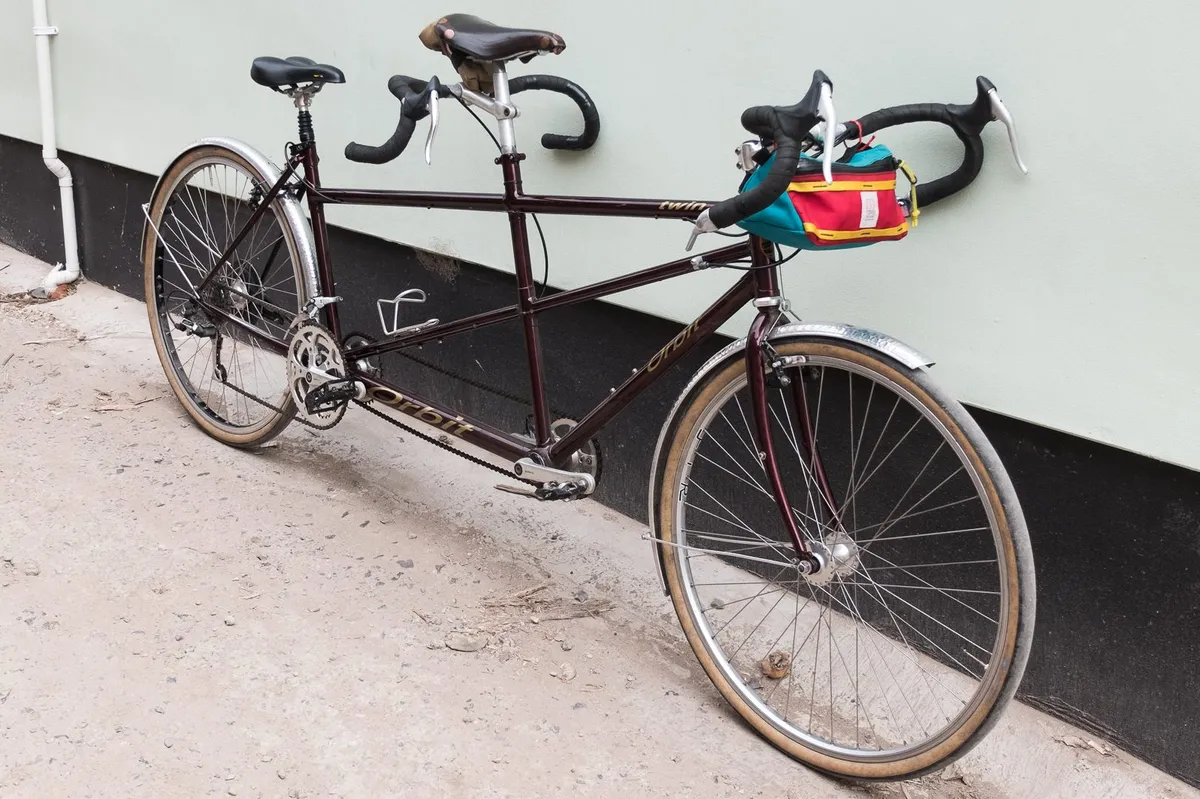
A mere week of searching turned up this beautiful burgundy coloured Orbit Twin, which was located remarkably close to my home in Bristol.
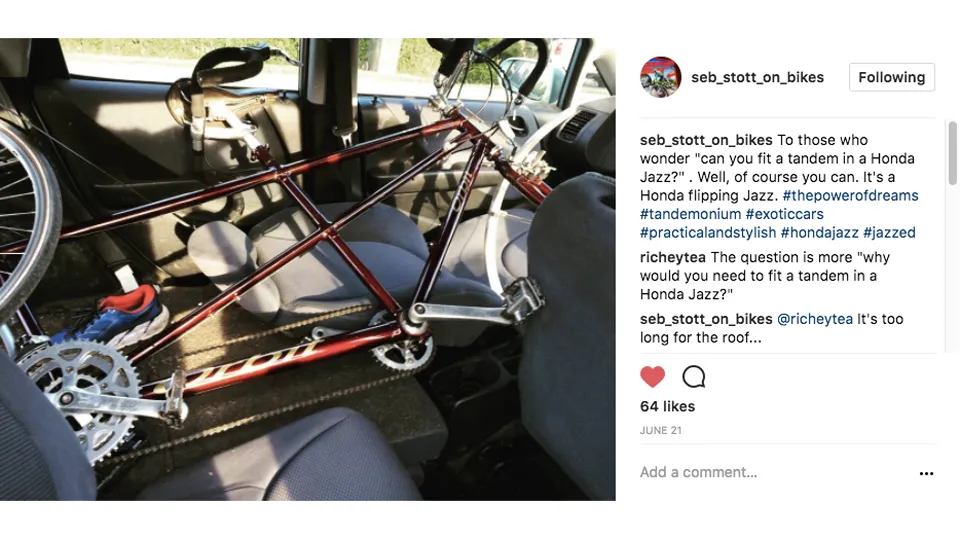
After a brief session of the most courteous and half-hearted haggling I’ve ever done, I packed the bike with remarkable ease into the back of Seb’s diminutive Honda Jazz and set off home, a mere £375 (approx $480 / AU$615) poorer — or perhaps better off, you might say.
Obsessive fettling
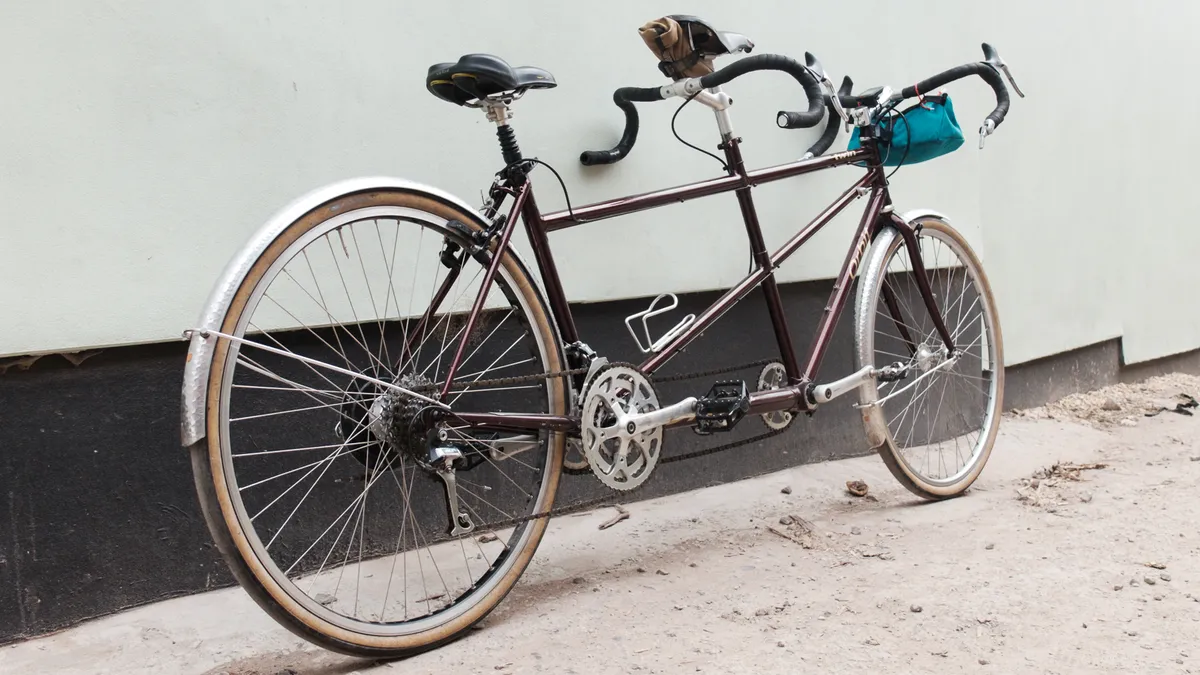
A short spin around the block was all that it took to confirm that our new purchase was the ‘real deal’, with a ride quality that was essentially incomparable with our original ‘Apollo-ing’ experiment.
To use the finest cycling-journalism parlance, the bike feels pleasingly stiff, even under the power of two middling riders, with a clearly well thought out geometry that strikes a good balance between stability and speedy handling.
I have no doubt that the high-quality construction of the bike is largely behind this, with an enormous ovalized ‘secondary down tube’ helping to resist any flex when cornering — something that the Apollo was very prone to, with the bike feeling like it was articulating around every bend.
I’m yet to measure up the frameset properly, but I also suspect that the head angle of the Orbit Twin is quite a bit steeper than normal for a touring-oriented bike, possibly matched with a short trail fork in a bid to lighten steering, as cornering on the bike is remarkably easy.
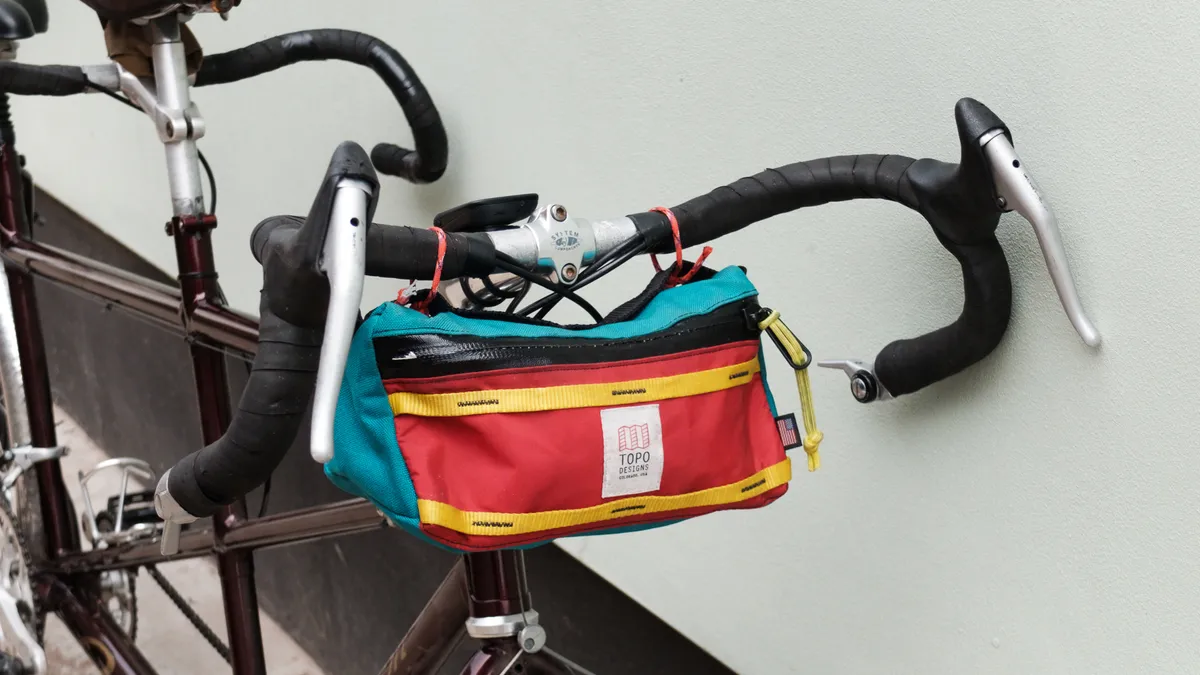
The bike has been clearly loved and not heavily used, with a smattering of really nice mid-level components, all of which are in great condition.
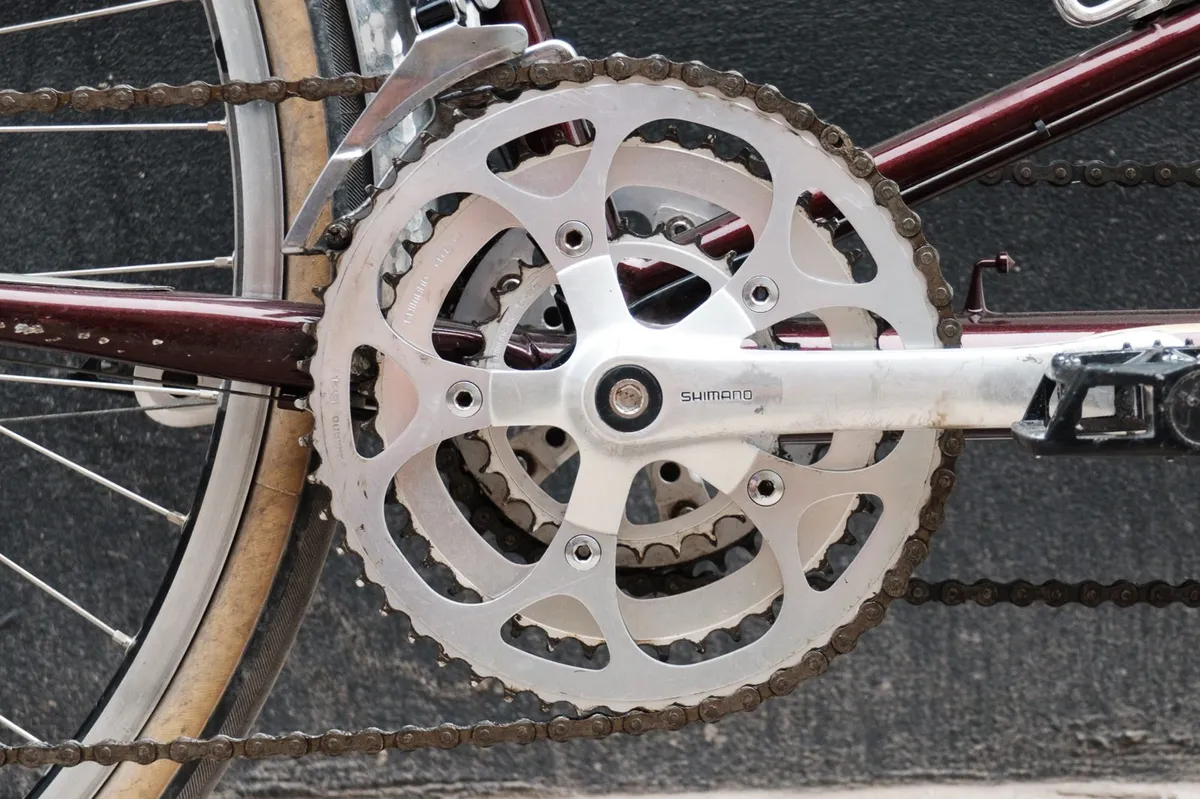
My particular highlight is the lovely polished alloy Shimano crankset. I’ve always been a sucker for old-school cranks with arms that are narrower than the pedal eyes, and as this particular bike has double the number of cranks of a regular one, it’s doubly handsome.
As I allude to in my bio, I’m also a massive hub nerd, with a particular soft spot for anything cup and cone, so you can imagine my delight when I realised the rear wheel was built around a ludicrously beefy and delightfully niche Shimano HF08 tandem hub.
Having fun on a bicycle made for two is all about attitude, not skill
The front wheel is built around a Suzue hub. This is of note because Suzue was one one of the very first brands to bring cartridge bearing hubs to the market and still produces a handful of exceedingly handsome, large-flange track and road hubs. Cat-nip for hub-sessives like me.
While there’s nothing wrong with cantilever brakes, I’m the first to admit that I find setting up post-mount pads a complete chore. So I swapped the pictured LX cantis out for a pair of Shimano XT T-780 v-brakes, actuated by Tektro’s RL520 linear-pull levers.
While nearly everyone’s attentions have been focussed on disc brakes for the past 15 years, the design of v-brake’s has been continuously and quietly updated and I’m seriously impressed by these brakes. There’s none of the slop or vagueness associated with the cheaper v-brakes that we tend to come in contact with these days and they provide more than enough power and modulation to stop the two of us with ease.
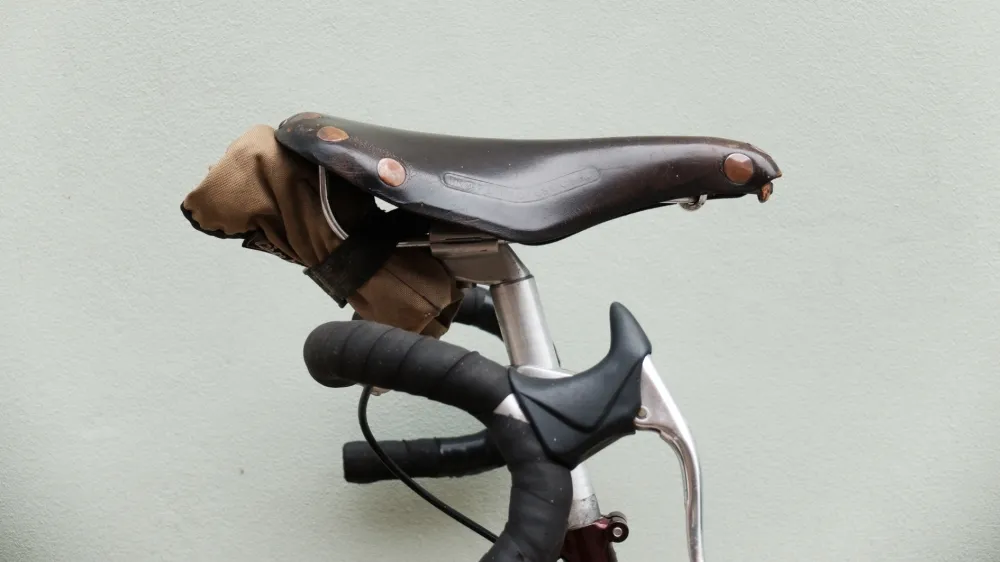
While getting to buy weird bits for my tandem has been good fun, getting to clear out some of my hoarded crap has been pretty good too. I jumped at the chance to swap out the bike's floppy Altus rear mech in favour of a rather nice XT M772 9 speed mech I had kicking around in my spare parts box.
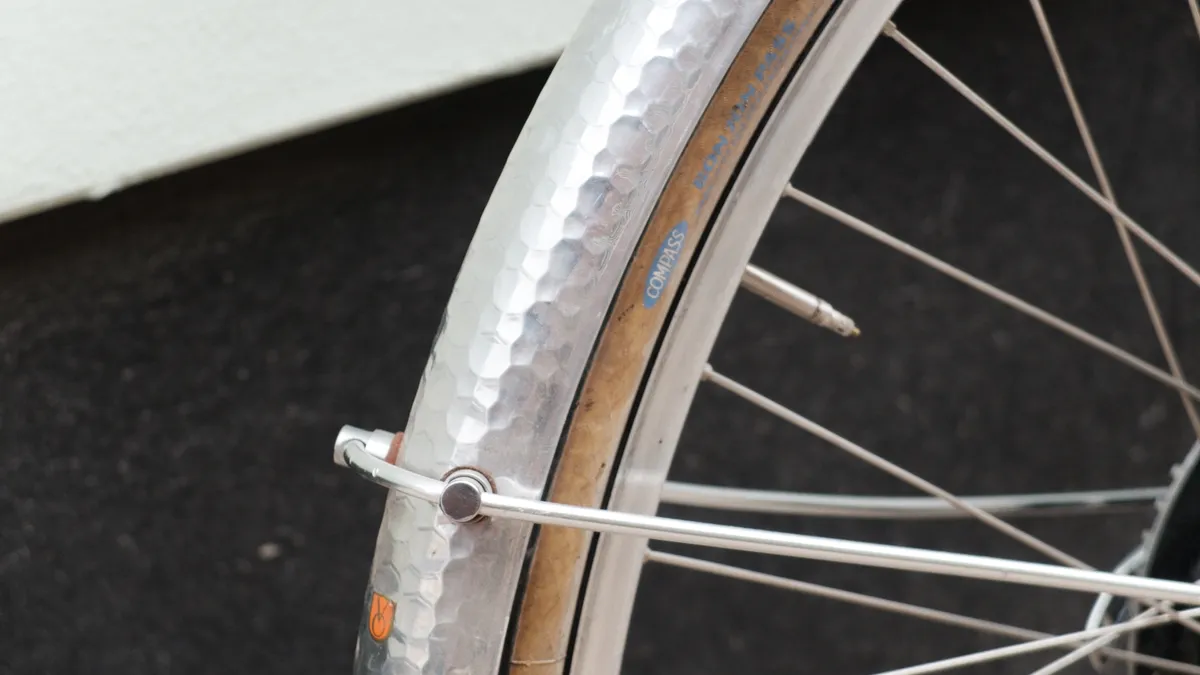
By far the most noticeable change to the bike was the swap from some old and cracked generic touring tyres to Compass Bon Jon tyres, which I’ve had in for test for the past few months.
Just like on a solo bike, the huge volume and supple nature of these tyres massively increased the level of comfort and control we have over the bike, though I’d be tempted to go even fatter in the future.
Naming conventions
After a few rides on the tandem, the time came to name our new bike. Naturally, we turned to fellow tandem-naughts on Instagram for inspiration, a particular highlight being the #StruggleBus2, but in the end we decided on #Cecilthetandem.
Shortly after this, I emailed the previous owner of the newly dubbed Cecil to tell him how we were getting on with the bike and discovered that his father was also called Cecil! As you would imagine, this completely affirmed our naming decision for the bike and made our hearts melt all at once.
What is riding a tandem like?
Riding a tandem is a pretty weird experience at first and there have been more than a few things that have surprised us about Cecil:
As captain — the novelty of getting to call myself ‘captain’ hasn’t worn off yet — I’m in charge of gear changes.
Shifting is second nature to both of us on a solo bike, but larger gear changes on the tandem, particularly from the middle to inner ring at the front, must be communicated clearly. If I forget to do this, Laura won’t know to ease off the power before the shift, resulting in a really quite unpleasant jolt as resistance decreases.
Fast descending, cornering and braking on the other hand isn’t nearly as nerve-wracking as we had expected.
On our first tandem, the stoker (rider on the back) had no control over braking, but on Cecil, the drag brake — an incredibly heavy Arai drum brake — is controlled by the stoker.
While this won’t actually stop you — it’s used instead to keep speed in check on long descents, reducing heat build-up on the rims — Laura finds having at least a tiny bit of control reassuring.
We’ve both become more comfortable letting me take full control on descents, loosening up to allow me to clock the pedals in corners and get a little bit of a moto’ lean on — I guess it must be misplaced and implicit trust (and true love) on Laura’s part.
I’ve often scoffed at suspension seatposts as we largely moved past the whole ‘suspending the rider’ thing back in the nineties, so I was planning on promptly swapping out the one that came fitted for the stoker on Cecil for a fixed one. However, after just one ride Laura was a total convert. It’s remarkable how much subconscious shifting of weight you do when preparing to hit rough terrain on a solo bike, but anticipating bumps is much harder when you're sat at the back staring at my butt.
To be fair, Cecil came fitted with a rather nice USE SX suspension post that is actually remarkably active compared to other posts I’ve used, which really helps to isolate Laura from the worst bumps
Should you try tandeming?
Simply put, yes.
Often referred to as a ‘divorce maker’, there’s a massive misconception that riding a tandem is a stressful experience — I think that's providing you have the right temperament, can communicate well and don’t mind looking a little ridiculous, riding a tandem is just really daft fun and should definitely be viewed as such.
Sure, setting off can be a bit tricky at first, but providing you have a trusting stoker who doesn’t wiggle about too much, the ‘quality’ of your ride is really determined by the skill of your captain, with any moderately confident solo rider likely to be able to control a team with ease.
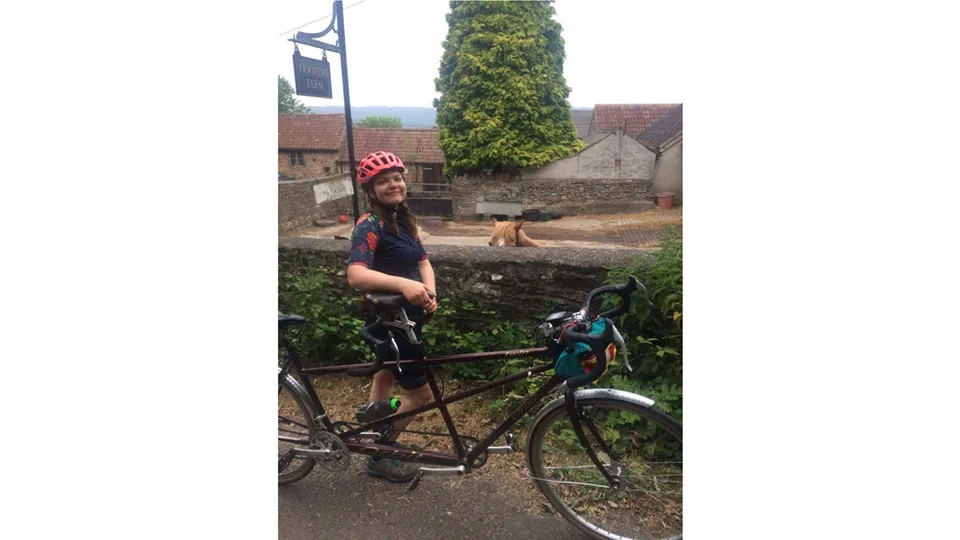
While there’s absolutely nothing to stop you riding hard on a tandem — particularly on the flat, where even with our combined middling power we’ve managed to get up to some ludicrous speeds — you’re more likely to be out for a chilled cruise or tour, and your riding aspirations should be adjusted as such. Having fun on a bicycle made for two is all about attitude, not skill.
In the same way that riding gravel or 'cross bikes in terrain more suited to a mountain bike is fun, being ‘held back’ by the limitations of a tandem is also equally amusing. Trust me, trying to turn a sharp corner on something with a turning circle of a small boat is bound to put a smile on your face.
And with a ripe second-hand market on eBay, the likelihood is you’ll be able to pick up a bargain similar to ours — and besides, who doesn’t like buying more bikes?
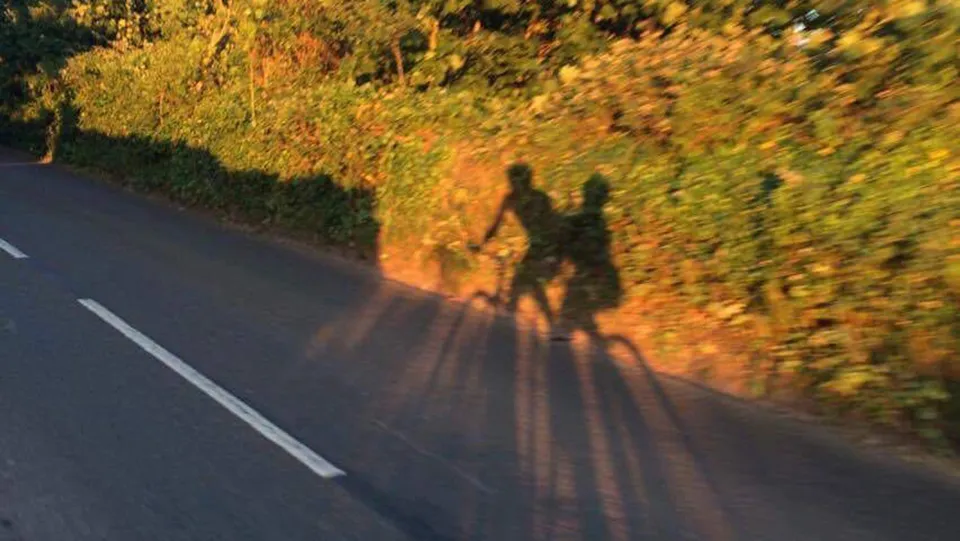
So to conclude, throw off the shackles of assumption and try out tandeming. It’s a total hoot and perhaps, in the words of Orbit itself, you’ll “find yourself, together”.
What’s next for Cecil?
We're are planning a whole bunch of trips on Cecil, including an extended tour towards the end of summer and perhaps a go at Laura’s first century.
I’ve also got a few stupid projects that I’d like to try with my partners in nonsense, Reuben and Seb. This is not the last you’ll hear of dear old Cecil!
Are there any tandem riders among our readership? Or are you all afraid of the ol’ divorce maker? Be sure to share any photos in the comments below and let me know if my gushing words have inspired you to try it out!
